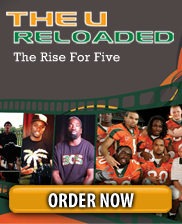GLENDALE, Ariz. -- Before every nuance of baseball came to be dissected, isolated and quantified, hitters used to assume that the best, most experienced catchers got the most calls from umpires.
“When you had Carlton Fisk or Bob Boone back there, you knew those guys were good at getting pitches,” Los Angeles Dodgers manager Don Mattingly said.
Now that the Information Age has pulled baseball into its orbit, a catcher’s ability to frame pitches so that they appear to be strikes has become one of the hottest areas of study. New Dodgers president of baseball operations Andrew Friedman has long been a proponent of the skill, which is why he lived with sub-par hitting from guys like Jose Molina in Tampa Bay.
And it’s also one of the reasons Matt Kemp is getting ready for the season five miles from here, with the San Diego Padres, instead of alongside longtime teammates Clayton Kershaw and Andre Ethier in Dodgers camp.
The Dodgers traded Kemp, a former MVP runner-up who led the majors in slugging after the All-Star break last year, for Yasmani Grandal, a catcher with a lifetime .245 batting average who is just a year-and-a-half removed from major knee surgery. On paper, it doesn’t jump out as one-sided in the Dodgers’ favor.
But there were motives for the trade beyond the players’ production in the batter’s box. The Dodgers were able to shed $75 million of Kemp’s $107 remaining salary and they got a catcher who, if things work out, could make the Dodgers' pitching even better.
Grandal, who is not otherwise known as a premium defensive catcher, is by all accounts one of the best pitch framers in baseball. The Dodgers’ incumbent starting catcher, A.J. Ellis, doesn’t rate highly and has vowed to work on the skill this spring.
“With Andrew and [GM] Farhan [Zaidi], you do hear a lot of it,” Mattingly said. “Now that’s part of the analytics, how he’s catching the ball and getting pitches. We do know Yasmani scores high on all of that.”
According to Baseball Prospectus, Grandal got 120 “extra” strikes called last season, an extraordinary number considering he caught just 76 games. Among other things, Grandal’s pitch framing in San Diego helped revive the career of former Dodgers left-hander Eric Stults, a finesse pitcher who makes a living at the fringes of the strike zone.
Pitch framing might be a valuable skill, but it’s not necessarily one that people like talking about at length. After all, it commodifies the fallibility of umpires. In a perfect world, how a catcher receives the baseball shouldn’t impact balls and strikes, but it has become an area where the most analytical minds in the game seek to exploit its most human element.
Grandal said he used to play a game with himself when he was behind the plate, counting how many pitches he considered balls he could get called strikes. He would be happy if he could get a half-dozen a game to go his pitchers’ way. On some days, getting that many borderline calls could be the difference between a win and a loss.
Then, a couple of years ago, people finally started noticing.
“Once somebody brought to my attention that it was a stat, it was kind of funny, because I was like, ‘I’ve kind of been playing this game for a while,’ “ Grandal said.
Grandal paused for a moment and added, “I never liked the idea of stealing strikes, because that’s making the umpire look bad. That’s the one thing I don’t want to do is make them look bad.”
Grandal said he learned his receiving skills from University of Miami assistant coach Joe Mercadante and then refined them over the years in pro ball working with veterans such as Ramon Hernandez, Pat Kelly, Brad Ausmus and A.J. Hinch. He doesn’t view pitch framing as fooling the umpire, but as making it easier for him to see the ball.
“I’m trying to make the umpire’s job easier. The better lane I give them to see the ball, the better relationship I’m going to have with them, the more they’re going to trust me,” Grandal said. “I’m always talking to them, trying to see, ‘Hey, do you have a good lane to see? Am I cutting you off? Are you seeing this pitch?’ The relationship between the catcher and pitcher is pretty important, but you also have to have a relationship with the umpire.”
The Dodgers should have a better catching situation in 2015 than last season, in part because Grandal and Ellis have skill sets that complement each another. Grandal’s best hitting typically comes from the left side. Ellis is a right-handed hitter. Grandal excels at pitch framing. Ellis is a master of game planning and calling pitches. If they put in the work and share information this spring, there’s no telling what kind of impact they could have on a Dodgers staff that finished fourth in the National League in ERA.
They also could have acquired Grandal, 26, at the right time in his career. A torn knee ligament cost him half of the 2013 season and limited him much of last year, he said.
“It kind of affected everything,” Grandal said. “Now, it’s good.”

(espn.com)



